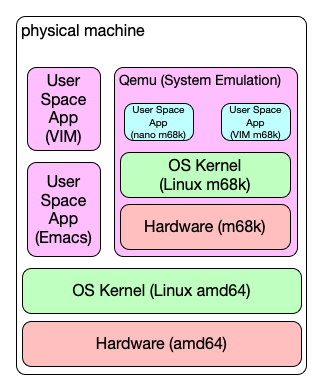

QEMU SYSTEM EMULATION INSTALL
I decided I also wanted to install DSL to an (emulated) hard drive so I could save settings between boots. And there it is - a beautiful DSL instance. This tells QEMU to start up with the DSL CD image as the emulated CD-ROM. Personally, I prefer to mix things up a bit, so I downloaded Damn Small Linux (DSL) and ran that as a live CD using the command:

The QEMU online user documentation suggests you download a number of test disk images to ensure things are working correctly. That was as simple as downloading the tar archive file, copying it to the root directory, and unpacking it as root. Since I was having some problems installing from source on my Ubuntu system, I installed the binary. There are two ways to install QEMU: either in binary format, for Linux i386 only (a tar.gz file that you simply unpack into your top-level directory) or from source. I was impressed with the breadth of command-line options for things like location of the CD-ROM, diskette, and hard disks, which device to boot from, and how much memory the emulated machine should have. I appreciated being able to run in snapshot mode (where the original state of the virtual hard disk is preserved and any changes are written to a temporary location). Networking seemed to “just work” from the first the emulated machine could access the Internet while running from my wireless laptop. Right from the beginning, I was impressed by the quality of QEMU, as well as the feature set. Going through the process of installing and configuring QEMU not only gave me a worthwhile new software tool, but also helped me learn a few things about Linux. QEMU thereby lets you run another operating system on top of your existing OS. It allows you to emulate a number of hardware architectures (x86, x86-64, and PowerPC are currently known to work, with others, including SPARC and MIPS, in development). QEMU is an open source cross-platform emulator for Linux hosts.


 0 kommentar(er)
0 kommentar(er)
